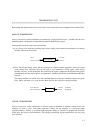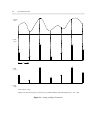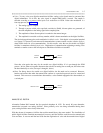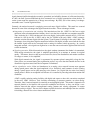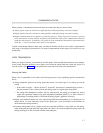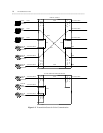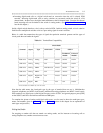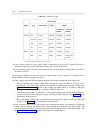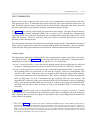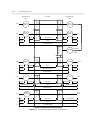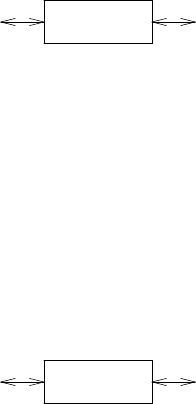
TRANSMISSION TYPES 1-5
_ ______________________________________________________________________________________
_ ______________________________________________________________________________________
_ ______________________________________________________________________________________
• Voice: To carry voice over digital transmission facilities, analog voice signals must be converted into
digital information. To do this, the voice signal is sampled 8000 times a second. The sample is
encoded according to a process called pulse-code modulation or PCM. Pulse-code modulation is a
four-step process (see figure 1-1).
1. The analog signal is sampled.
2. Through a process called pulse-amplitude modulation (PAM), discrete pulses are generated, of
the same amplitude as the analog signal at the sampled point.
3. The amplitude of these discrete pulses is rounded to the nearest integer.
4. The amplitude is encoded as a binary number, which is then transmitted over the digital facilities.
The device that performs pulse-code modulation is called a codec. Each digital voice terminal attached
to a System 75, System 85, and DEFINITY communications system contains a codec, called a digitizer,
where PCM occurs for voice communication. For this reason, voice that can be carried over digital
facilities is sometimes called digitized voice. Digitization of communication originating at analog voice
terminals or trunks occurs at the switch ports to which these facilities are attached.
CODEC
ANALOG
SIGNAL
DIGITAL
SIGNAL
Note that voice-grade data may also be carried over digital facilities if it is put through the PCM
process. In fact, when voice-grade data enters the switch at an analog line or trunk port, the codec treats
the data identically to voice (see steps 1 through 4, above).
• Data: For binary data to be carried over digital facilities, the bits need not be converted. However,
headers and trailers that make the transmission conform to a particular protocol must be created and
inserted. This can occur at a stand-alone data module, a voice terminal equipped with a data module, or
a switch port.
PROTOCOL
CONVERTER
DIGITAL DATA
DIGITAL
SIGNAL
ANALOG VS. DIGITAL
Alexander Graham Bell invented the first practical telephone in 1876. For nearly 80 years thereafter,
transmission occurred over analog facilities. Since primarily voice was being transmitted during these
years, analog facilities more closely fit the need.
With the advent of computers, facilities that could transmit binary data were needed. The installation of
public digital facilities remained uneconomical, however, until the facilities could be used to transmit both
voice and data. It was not until the late 1950s that the digitization of voice and the transmission of digital









